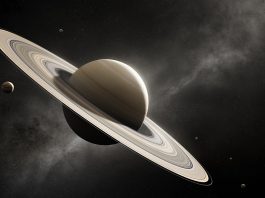NASA’s Spitzer telescope can see through the haze of star explosions, thus giving scientists a greater understanding of how these explosions occur.
Star explosions – the death throes of massive stars – are often presumed to be some of the brightest and most powerful explosions in the Universe, and therefore hard to miss. However, the number of these explosions witnessed in the distant parts of the Universe actually fall far very short of astrophysicists’ predictions.
The Spitzer Telescope
Utilising data from NASA’s recently retired Spitzer Space Telescope, scientists have conducted a novel study, published in the Monthly Notices of the Royal Astronomical Society, which has led to the detection of five supernovae that, going unobserved in optical light, had not been seen before.
Spitzer saw the Universe in infrared light, which pierces through dust clouds that block optical light – the kind of light our eyes see and that unobscured supernovae radiate most brightly.
Detecting supernovae
In order to find currently undetected supernovae, the team studied Spitzer observations of 40 dusty galaxies. In these galaxies, the researchers discovered a large number of supernovae, thereby confirming that supernovae occur as regularly as scientists expect them to.
This hypothesis is based on scientists’ current understanding of the evolution of stars, and studies like this are essential to enhance that understanding, by either strengthening or challenging certain aspects of it.
“These results with Spitzer show that the optical surveys we’ve long relied on for detecting supernovae miss up to half of the stellar explosions happening out there in the universe,” explained Ori Fox, a scientist at the Space Telescope Science Institute in Baltimore, Maryland, and lead author of the new study.
“It’s very good news that the number of supernovae we’re seeing with Spitzer is statistically consistent with theoretical predictions.”
This ‘supernova discrepancy’ – the discrepancy between the number of forecast supernovae and the quantity actually detected by optical telescopes – is not a problem in the nearby Universe. There, galaxies have slowed their pace of star formation and are typically far less dusty.
Testing the hypothesis
Whereas, in the more distant throws of the Universe, galaxies appear younger, generate stars at higher rates, and generally have greater quantities of dust. This dust absorbs and scatters optical and ultraviolet light, blocking it from reaching telescopes. Therefore, scientists have long theorised that the missing supernovae must exist and are just unseen.
“Because the local universe has calmed down a bit since its early years of star-making, we see the expected numbers of supernovae with typical optical searches,” commented Fox. “The observed supernova-detection percentage goes down, however, as you get farther away and back to cosmic epochs where dustier galaxies dominated.”
The ability to discover supernovae at such long distances is difficult; in order to accomplish this pursuit of supernovae cloaked by the murkier galactic realms, but at smaller distances, the group chose a local set of 40 dust-choked galaxies, called luminous and ultra-luminous infrared galaxies (LIRGs and ULIRGs). The dust in LIRGs and ULIRGs absorbs optical light from objects like supernovae but enables infrared light from these same objects to pass through unobstructed so that telescopes such as Spitzer can identify them.
The team’s theory demonstrated itself to be accurate when the five never-before-seen supernovae came to infrared light. “It’s a testament to Spitzer’s discovery potential that the telescope was able to pick up the signal of hidden supernovae from these dusty galaxies,” noted Fox.
“It was especially fun for several of our undergraduate students to meaningfully contribute to this exciting research,” added study co-author Alex Filippenko, a professor of astronomy at the University of California, Berkeley. “They helped answer the question, ‘Where have all the supernovae gone?’”
Core-collapse supernovae
The supernovae discovered by the telescope are referred to as “core-collapse supernovae,” and they encompass massive stars more than eight times larger than the Sun in terms of mass. As they age and their cores fill with iron, these gigantic stars are no longer able to generate the amount of energy needed to resist their own gravity, causing their cores to abruptly and cataclysmically collapse.
“If you have a handle on how many stars are forming, then you can predict how many stars will explode,” said Fox. “Or, vice versa, if you have a handle on how many stars are exploding, you can predict how many stars are forming. Understanding that relationship is critical for many areas of study in astrophysics.”
Next-generation telescopes, including NASA’s Nancy Grace Roman Space Telescope and the James Webb Space Telescope, will also detect infrared light.
“Our study has shown that star formation models are more consistent with supernova rates than previously thought,” said Fox. “And by revealing these hidden supernovae, Spitzer has set the stage for new kinds of discoveries with the Webb and Roman space telescopes.”









